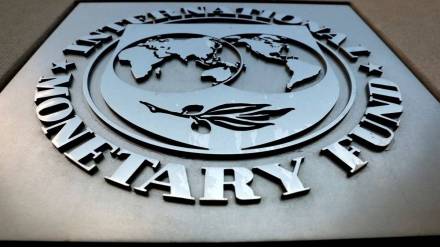Pakistan and the International Monetary Fund (IMF) will reportedly resume talks today, after a 10-day negotiation on the release of $1.1 billion under the $7-billion bailout signed in 2019 ended without a staff-level agreement. Sarthak Ray takes a look at the bailout, why it is stuck, and what lies ahead for Pakistan.
The bailout
Pakistan’s $350-billion economy had been teetering on the brink before the pandemic and the catastrophic floods the country suffered last year. In 2019, it had approached the International Monetary Fund (IMF) for a loan under the latter’s Extended Fund Facility (EFF). The IMF says the EFF route is for countries facing “serious medium-term balance of payments problems because of structural weaknesses that require time to address” and the engagement under the arrangement can ”help countries implement medium-term structural reforms”. This is the 13th IMF bailout for Pakistan since the 1990s, initially pegged at $6.5 billion, but increased to $7 billion last year. IMF loans clash with the sovereignty of a nation as the Fund sets the policy direction for it.
Why Pakistan needs it
When it approached the IMF for the bailout (in tranches over 39 months) in 2019, Pakistan was already reeling under high inflation and sharp depreciation of the Pakistani rupee. Its forex reserves stood below $10 billion in all weeks except three since the Imran Khan adminstration came to power, The Indian Express reported.
At present, the country’s economy is in a shambles. Prime Minister Shahbaz Sharif termed the economic situation as quite serious. The government estimates the floods last year to have caused billions in damage, with $16 billion required for mere recovery. Its currency has crashed to 269.37 against the dollar; with an import cover of just three weeks and an economy that is heavily dependent on imports, consumer prices, up 27.55% from a year ago, could shoot up further. The country has never been closer to default on its external debt, economists say.
The inflation shadow
With the country critically dependent on imports, the market-based exchange rate, economists say, is going to push up prices. So would the trimming of power subsidies, which cover nearly 88% of the country’s population, and the hike in tariffs. And all of this is against the backdrop of a cut in the growth estimate and the flood devastation yet to be addressed.
Other options
With polls nearing, swallowing the bitter pill of structural reforms that IMF wants will prove difficult. The opposition party had run the bailout into trouble when it was in power. What Pakistan ends up conceding to the IMF will depend on what other funding sources it can secure. China, Saudi Arabia, and the UAE have helped it out in the past, but the Gulf nations and Saudi Arabia have made more aid conditional to IMF-like reforms. Whether China will help isn’t clear, as it already holds 30% of Pakistan’s external debt.
Why the bailout is stuck: What Pakistan and IMF are saying
The IMF’s press release after conclusion of the visits of its officials to Pakistan for talks didn’t mention anything conclusive about the staff-level agreement. It said that considerable progress had been made and outlined “reduction in untargeted subsidies, while scaling up social protection to help the most vulnerable” as well as “allowing the exchange rate to be market-determined” and “preventing further accumulation of circular debt” in the energy sector” as key priorities.
Government sources cited in Pakistani media said the talks hit an impasse over the Fund’s concerns over both the action plan Pakistan had proposed on fiscal measures and the external funding sources. The Pakistani FM had said certain “prior actions” needed to be taken, and later, the government announced plan to increase power tariffs sharply. Pakistan has already moved to a market-based exchange rate, but the debt overhang in the energy sector remains a big concern. It is also not clear the path Pakistan will take in the long run on defence spending, which the IMF is clear that it must cut—in FY23, budgeted defence spending was 11% higher than the year before. The hike in excise duty on sugary drinks that IMF wants is also a politically contentious proposition for Pakistan.
